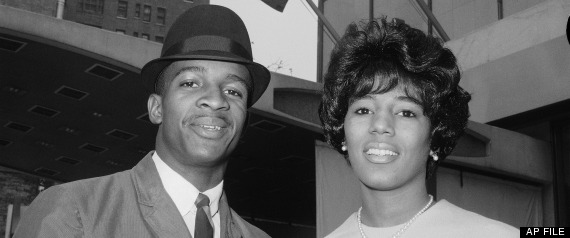Charlie Sifford, first Black Golfer on PGA
Charlie Sifford, first black golfer on the PGA Tour, dead at 92
Sifford challenged the Caucasian-only clause and the PGA rescinded it in 1961. He won the Greater Hartford Open in 1967 and the Los Angeles Open in 1969.
THE ASSOCIATED PRESS
Wednesday, February 4, 2015, 11:33 AM
- A
- A
- A
 MARK DUNCAN/APCharlie Sifford, who fought the Caucasian-only clause on the PGA Tour and became its first black member, died Monday night. He was 92.
MARK DUNCAN/APCharlie Sifford, who fought the Caucasian-only clause on the PGA Tour and became its first black member, died Monday night. He was 92.
Charlie Sifford, who only wanted a chance to play and broke the color barrier in golf as the first PGA Tour member, died Tuesday night, the PGA of America said.
Sifford, who recently had suffered a stroke, was 92. Details of his death and funeral arrangements were not immediately available.
PGA of America President Derek Sprague called Sifford “an uncommon and faithful servant.”
“His love of golf, despite many barriers in his path, strengthened him as he became a beacon for diversity in our game,” Sprague said. “By his courage, Dr. Sifford inspired others to follow their dreams. Golf was fortunate to have had this exceptional American in our midst.”
A proud man who endured racial taunts and threats, Sifford set modest goals and achieved more than he imagined.
Sifford challenged the Caucasian-only clause and the PGA rescinded it in 1961. He won the Greater Hartford Open in 1967 and the Los Angeles Open in 1969. He also won the 1975 Senior PGA Championship, five years before the Champions Tour was created.
His career was fully recognized in 2004 when he became the first black inducted into the World Golf Hall of Fame. Last November, President Barack Obama presented him with the Presidential Medal of Freedom. Jack Nicklaus and Arnold Palmer are the only other golfers who received that honor.
“Charlie won tournaments, but more important, he broke a barrier,” Nicklaus once said. “I think what Charlie Sifford has brought to his game has been monumental.”
The one goal that eluded him was a chance to play in the Masters, which did not invite its first black player until Lee Elder in 1975. Sifford remained bitter, though the pain was eased when Tiger Woods won the first of his four green jackets in 1997.
Woods often has said he would not have played golf if not for Sifford and other black pioneers.
“It’s not an exaggeration to say that without Charlie, and the other pioneers who fought to play, I may not be playing golf,” Woods said in an email to The Associated Press late last year. “My pop likely wouldn’t have picked up the sport, and maybe I wouldn’t have either.”
The road was never easy.
 ANONYMOUS/APCharlie Sifford, who died Monday night at 92, won the Los Angeles Open in 1969.
ANONYMOUS/APCharlie Sifford, who died Monday night at 92, won the Los Angeles Open in 1969.
Sifford was born on June 22, 1922 in Charlotte, North Carolina. He worked as a caddie and dominated the all-black United Golfers Association, winning five straight national titles. He longed to play against the best players, only to run into the same barriers that Teddy Rhodes and Bill Spiller faced — the Caucasian-only clause.
In his autobiography, “Just Let Me Play,” Sifford told of meeting Jackie Robinson in California about the time Robinson was trying to break the color barrier in baseball.
“He asked me if I was a quitter,” Sifford wrote. “I told him no. He said, ‘If you’re not a quitter, you’re probably going to experience some things that will make you want to quit.”’
During the 1952 Phoenix Open, one of the few events that blacks could play, Sifford found human feces in the cup when he got to the first green. He received death threats over the phone at the 1961 Greater Greensboro Open and heard racial slurs as he walked the fairways. He finished fourth, and didn’t quit.
He was beloved my some of golf’s biggest stars, including Nicklaus and Arnold Palmer.
During his induction ceremony, Sifford told of his first meeting with Palmer. They were playing in the 1955 Canadian Open and Sifford opened with a 63 to lead Palmer by one shot. He recalled Palmer standing in front of the scoreboard saying, “Charlie Sifford? How the hell did he shoot 63?”
“I’m standing right behind him,” Sifford said. “I said, ‘The same damn way you shot 64.’ That’s how we met.”
Sifford also received an honorary doctorate degree from the University of St. Andrews in Scotland for his career as a pioneer.
He often attended the Bridgestone Invitational at Firestone, not far from his home in Ohio. During an interview with the AP in 2000, Sifford said he was proud of the role in played in making the PGA Tour accessible to blacks.
“If I hadn’t acted like a professional when they sent me out, if I did something crazy, there would never be any blacks playing,” he said. “I toughed it out. I’m proud of it. All those people were against me, and I’m looking down on them now.”



